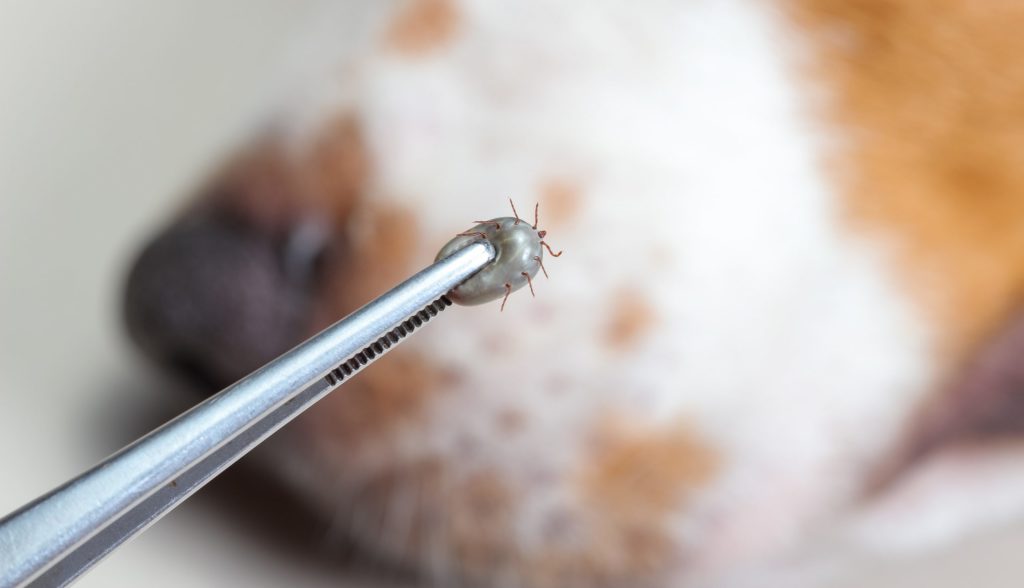Warm weather means flowers blooming, birds singing, outdoor activities—and ticks biting. Learn how to recognize and remove a tick before it becomes a big health problem.
Ticks bite because they must consume the blood of a host to reach the next stage in their life cycle. As they feed, they may pass on pathogens that cause illness. In the United States, there are more than 90 tick species¹ that spread 16 known diseases to humans, pets, livestock and wildlife². The majority of people and pets become infected in the spring and summer, when ticks are most active.
Ick! Is it a Tick?
If you find an insect on your clothing or attached to your skin, take a closer look. Ticks have:
- Six legs in the larva stage, and eight legs as nymphs and adults
- Flat, teardrop-shaped bodies
- Black, brown or reddish coloration but their blood sac can take on a milky white or gray appearance when filled with blood
- Bodies ranging from 1/8 to 3/8 inch in length
How to Remove a Tick
- Grasp it with tweezers as close to the skin as possible.
- Pull straight upward, slowly but steadily.
- Try to remove the mouth parts intact. If they break off, try again, but don’t injure the skin further by digging.
- Avoid unproven home remedies, such as brushing the tick with nail polish or petroleum jelly, freezing it with an ice cube, or applying heat. These tricks do not work.
- Instead, dispose of a live tick by submersing it in alcohol, placing it in a sealed bag/container, wrapping it tightly in tape, or flushing it down the toilet. Never crush a tick with your fingers.
- After removing the tick, thoroughly clean the bite area and your hands with rubbing alcohol, an iodine scrub, or soap and water.
Sources: Purdue University and Centers for Disease Control and Prevention
